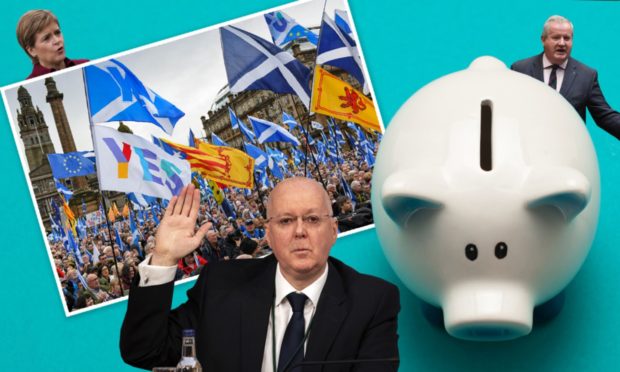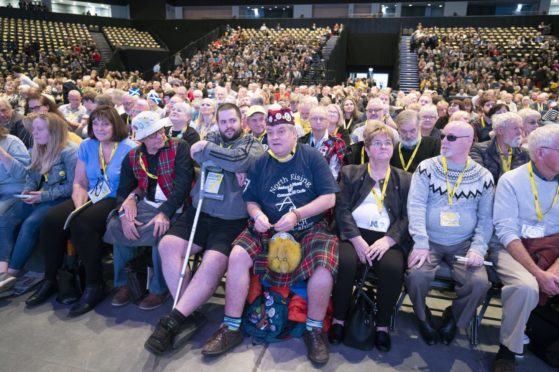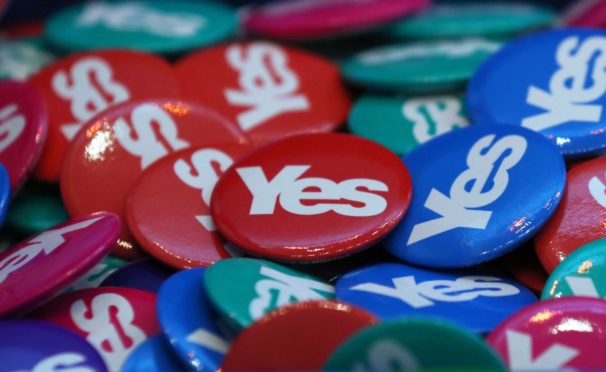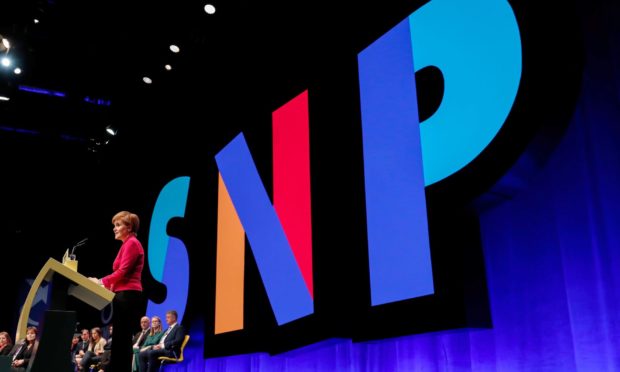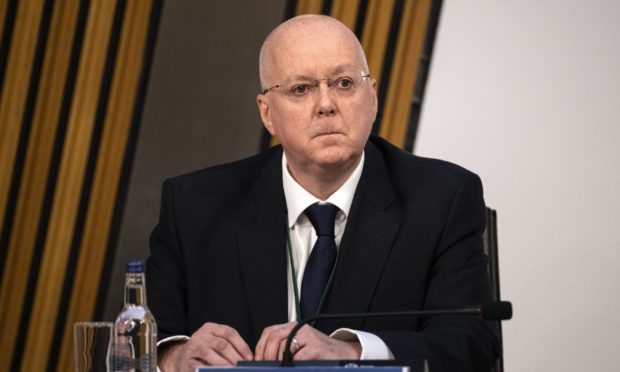The SNP released their annual accounts on Thursday, but what do they tell us about the state of the party as it faces a police investigation over alleged “fraud” and the ravages of the Covid pandemic?
Waxing and waning membership
The party prides itself on raising the majority of its funds through membership donation, with more than 86% of its total income coming from “the voluntary contributions of members and supporters” — with 55% of its total income coming from memberships alone.
Like almost every other enterprise, the coronavirus had a severe impact on takings in 2020 and contributed to a drop in member numbers, the party said.
As of the December 31 2020, the party had 105,393 members, a fall from 125,500 in 2019.
This has increased, rising to 119,000 by the end of May following the Holyrood election, with the pandemic and the introduction of Alex Salmond’s Alba Party clearly having some bearing.
Despite a drop in numbers, members raised an extra £182,000 for party coffers, an increase of 8%, with a total of £2,430,100 handed over.
Overall, the party earned £4,427,421 and spent £3,335,384, giving a pre-tax surplus of £1,092,037.
Money for independence
Regarding money “ringfenced” for the campaign for independence, the party said the following: “Funds received by way of donations are all treated in the same way. Whether received by card or cheque or by bank transfer, they are recorded as donations and accounted as such in our books. This includes reporting to the Electoral Commission where appropriate.
“Over many decades an internal process has been in use whereby, if a donor expresses
a wish for their donation to be utilised for a particular purpose whether of their
own accord, or because they have donated in response to a particular appeal, this is
recorded within HQ and a running total of such requests recorded. This includes full
details of the donor and the size of each individual donation.
“In due course, as money is utilised for a stated purpose, the balance of any such total is
reduced until the obligation is expunged.
“Donations made to the independence related fundraising appeals have been treated in
this way. They are recorded within HQ as being related to these appeals and amounts
raised will be spent for the intended purpose.
“Of course, the SNP is the party of independence and, as such, every penny we spend – directly or indirectly – is in support of winning independence.
“However, through this internal process we will ensure that the sums raised from these appeals will go directly to our work to secure a referendum and win independence.
“To be clear, by the end of 2020 a total of £666,953 had been raised through the independence related appeals and coded as such through the internal process.
“These donations are also included in – and have been reconciled with – the total amount for donations included in Party accounts from 2017 to 2020.”
The party has received £667,000 from supporters of independence, for a future campaign. The SNP claims, that as the party for independence, every penny it spends — be that on office costs, VAT bills, staff salaries or £234,263 in undisclosed legal fees over the course of two years — counts as expenditure towards “independence day”.
Even with the figure “ringfenced”, it will be up to supporters in future to decide whether they feel that’s where the money should go, as far as party chiefs are concerned.
The SNP will “ensure” in future, they say, to make sure funds raised from independence appeals will be spent solely on any future independence campaign.
Fraud fears
Police Scotland has confirmed it is investigating a number of reported “fraud allegations” supplied to them by members of the public regarding the use of party funds.
We explained what has been alleged earlier this year, in this story.
Edinburgh-based accountants Johnston Carmichael LLP were asked t0 conduct the audit into the party accounts for 2020.
They identified the party faced its greatest potential for fraud in its “revenue recognition”.
Revenue recognition is an accounting term, which without over-simplifying, means a company should only record income when it has been earned, not when the related cash is collected.
So for example, if a gardener asks for £20 to mow a lawn, that gardener can “recognise” that money in their accounts, even if they do not collect the £20 immediately after the lawn has been mown.
Auditors made the following recommendations to prevent fraud being perpetrated, and also examined how susceptible the party was to “management override”.
Finance chiefs at the SNP must:
-
- Agree on income received to bank receipts and supporting documentation.
- Reviewing the financial statement disclosures to assess compliance with the laws and regulations described as having a direct effect on the financial statements.
- Inquiring of management regarding the potential existence and extent of any litigation claims.
- Perform analytical procedures to identify any unusual or unexpected relationships that may indicate risks of material misstatement due to fraud;
- Read National Executive Committee and Audit & Finance Committee minutes for events that may impact the financial statements;
- In addressing the risk of fraud through management override of controls, testing the appropriateness of journal entries and other adjustments, assessing whether the judgements made in making accounting estimates are indicative of a potential bias, and evaluate the business rationale of any significant transactions that are unusual or outside the normal course of business.
Peter Murrell’s wage
Party chief executive and First Minister Nicola Sturgeon’s husband, Peter Murrell, was paid £79,750 last year.
This is the first time the figure has been published in party accounts since 2012.
Staff salaries cost the party more than £1 million in 2020, up from £874,266 the year before, with the party increasing the number of workers it has from 21 to 24.
The SNP raffle and misc. spending
Party members are invited to take part in regular “prize draw” raffles, where they can gamble their money in the hopes of winning cash rewards of up to £10,000.
At the last conference, one “lucky member” took home a Peugeot 208.
The income generated from the raffle during the pandemic generated more than 2.5 times as much money for the party than the year before — £413,439 compared to £160,669
Donations to the party overall decreased by £528,646, but everyone received was not large enough to be deemed declarable to the Electoral Commission.
As mentioned earlier, the party spent £77, 780 on legal fees in 2020, down from a whopping £156,483 the year before.
What exactly these were spent on remains unknown.
The pandemic did bring some savings — having spent £833,092 on an in-person conference in 2019, the 2020 virtual event cost a relatively smaller amount, £176,790 — with the party not having to fork out on venue hire, catering or security.
